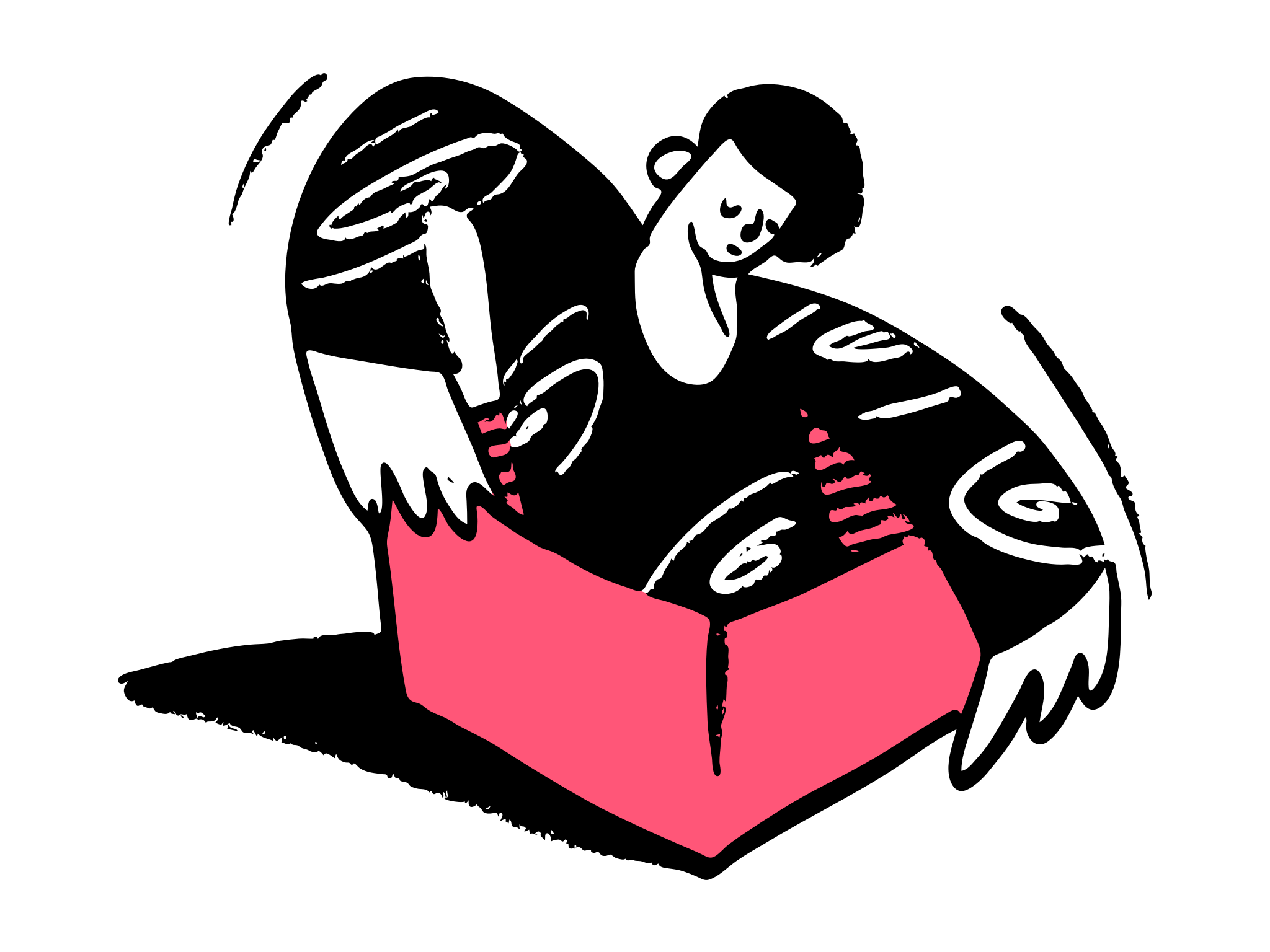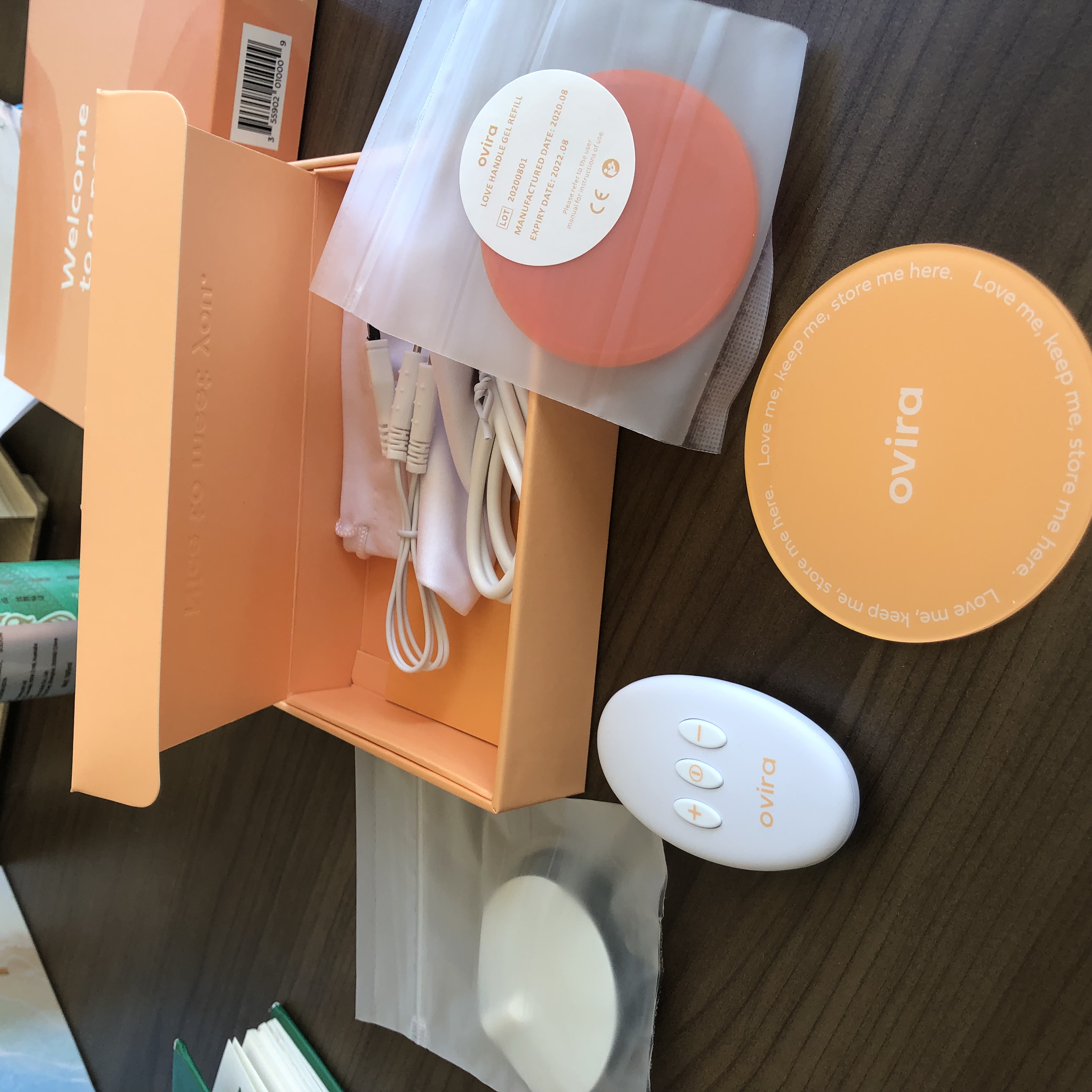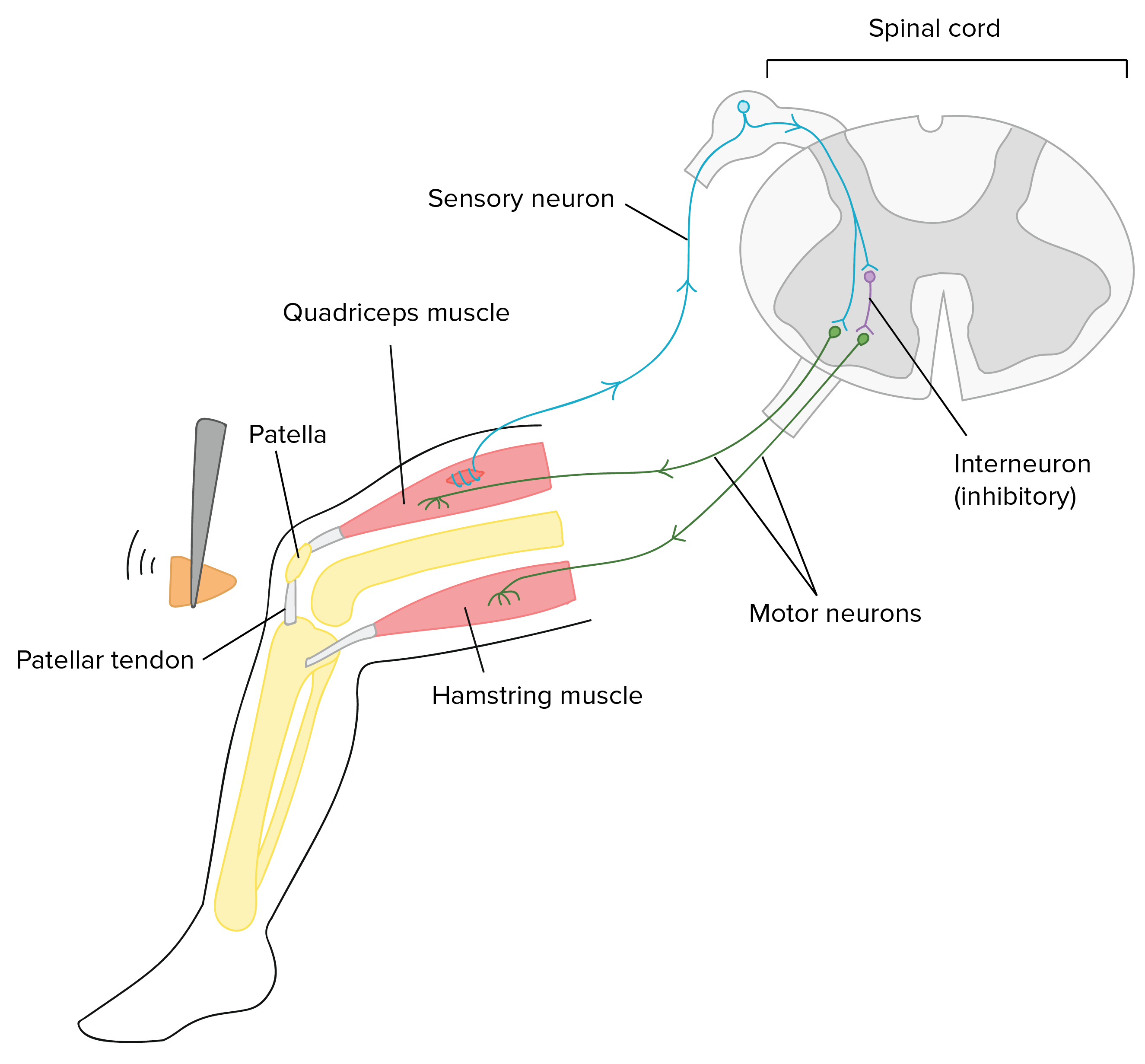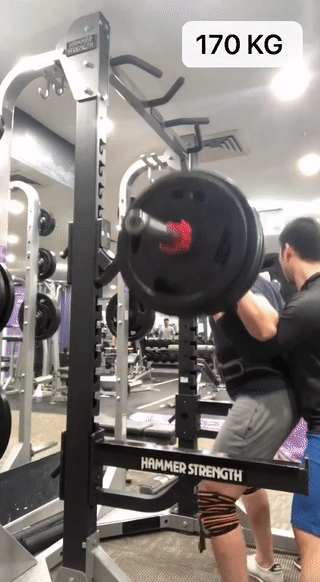Table of Contents (Click to show/hide)









A Good Relief For Lower Back Pain and Muscle Pain
What Is TENS?
Transcutaneous Electrical Nerve Stimulation(TENS) is asimple and non-invasive therapy that uses external electrical pulses to modify your perception of pain. In simple terms, it offers drug-free pain relief for avariety of painful conditions. The therapy can be used alone or in addition toprescription/ OTC (over-the-counter) medications and is often prescribed bymedical professionals to manage chronic (long-term) and, sometimes, even acute pain.

Ovira vs Livia vs Zoetech - See who comes out on top on period pain relief
What Is Menstrual Cramps?
Among different types of pain conditions, menstrual cramps are a prevalent condition that most women experience at some point in their lives. There are two types of period pain (dysmenorrhea)— primary and secondary dysmenorrhea.
Primary dysmenorrhea, the most common type of period pain, is thought to be caused by having too many prostaglandins that cause stronger muscle contractions with painful cramps in the uterus.
Secondary dysmenorrhea is caused by underlying medical conditions such as endometriosis, fibroids, pelvic inflammatory, and adenomyosis.
Noha device by Ovira is specifically designed to provide pain relief for both these conditions through TENS therapy. The device functions according to two main theories namely,
- Pain gate theory
- Natural opioid release
The Mechanism of Pain And TENS
In order to discuss different types of applications of TENS therapy, it is essential to have a clear understanding of the physiological basis behind “the sensation of pain” and how TENS controls it.
So, how do you get the sensation of pain? The most typical explanation for the mechanism by which pain sensation is generated and how TENS therapy works is provided by the Pain Gate Theory, which was initially developed in 1965. According to that, once your pain receptors get stimulated following an injury or inflammation, they will send pain signals via nerve fibres to your spinal cord and up to the brain through a gating process that occurs in your spinal cord. If the pain signals pass through these nerve gates to your brain, they will be perceived as pain. This is how you feel the sensation of pain.

However, these gates will determine if they allow pain signals to get through or prevent them from reaching the brain. It’s important to note that the role of these gates is played by a specific type of nerve fibres called Inhibitory Interneurons, which can be activated using Transcutaneous Electrical Nerve Stimulation (TENS). The activated interneurons will close the gate to nerve fibres which carry pain signals(A-delta and C nerve fibres) to your brain, causing a reduced perception of pain.

The natural opioid release is the other important concept which refers to the pain suppression process by TENS through the stimulation of Endorphin production. Endorphins are considered the body’s natural painkillers. (And this is the reason why people love working out - our body produce more Endorphin post workout)
How Does A TENS Unit Relieve Your Back Pain?
When it comes to managing back pain, the same principle can be applied. Your back is composed of many types of structural components such as muscles, bones, ligaments, tendons, and disks; therefore, a problem with any of these components could be the reason for your back pain.
In most cases, injuries and strains, maintaining poor posture, and certain medical conditions will lead to such problems. Lower back pain, in particular, could be linked to,
- Lower back muscles
- The bony lumbar spine
- Disks between vertebrae
- The skin over the lumbar area
- Ligaments around the spine
Since pain receptors are present in many of these structures when one of these components is injured, inflamed, or malfunctioning, they will start sending pain signals to your brain through the usual pathway explained in pain gate theory. If these signals can reach your brain, you will experience back pain.
However, as explained in the theory, your small TENS unit, with its gentle electrical impulses, will close the gate for pain nerves through the activation of inhibitory interneurons in your spinal cord, helping you relieve your back pain.
I highly recommend you to take 5 mins to watch this video, which gives you a quick, detailed explaination of the relationship of Interneurons and how TENS works.
Quality of Evidence
Theoretically, it does the job! But, what about the clinical evidence on its effectiveness against back pain?
Interestingly, due to inadequate and conflicting evidence, researchers doubt if it can solely address chronic lower back pain effectively, whereas some controlled studies suggest that the therapy could be effective when used as a short-term pain-relieving procedure against chronic back pain.
It’s obvious that this well-established technique has the potential to eliminate a certain percentage of pain that depends on the individual and the condition that’s being treated. Many health professionals have reported that the therapy works effectively for patients with chronic pain who are not responding well to prescription pain-relieving drugs.
“For some patients, a TENS device may be all that’s needed”
----- says Stuart Kahn, MD, orthopaedic spine surgeon at The Mount Sinai Health System in New York.
Nonetheless, if you don’t want to rely on pain relieving drugs or have tried all the other options without noticing any changes in the intensity of your pain, this could be worth a try. TENS units that are designed to wear over the skin of the lower back, such as the Noha device will allow you to address these types of back pains quickly. It is an effective and safe TENS device that is FDA approved and registered with the Therapeutics Goods Administration.
The most important thing to remember when choosing a TENS device is that generally, the value of its technique isn’t going to be limited to one specific pain or gender. TENS may help both men and women manage pain from many day-to-day pains such as arthritis, knee pain, neck pain, and pelvic pain, making it an excellent alternative for painkillers.
My Personal Experience with TENS Unit
For readers who don’t know me in person - I am a gym addict who works out five times a week. While most of my training is weight lifting, I always schedule myself with 1.5 hours of HIIT every week. What’s more, I also train Krav Maga (Martial Art). My current stats are 180cm, 91 kg and my max squat weight is 180 KG.

My lifestyle provides me with energy to boost my active lifestyle, but it also opens a gate for injuries. The injury often leads to bruises and intense pain. However, I can still feel muscle soreness/pain even tho it heals. I tried to practice yoga daily to boost the recovery (it works), but the mild soreness on my back & knee muscle from injuries & long-sitting still bothers me a lot.
I have been using Ovira's TENS unit for one month now. And I have to say it opens a new world. It was originally designed for women's period pain relief. Still, the Pain Gate Theory & inhibitory interneurons mechanism behind it makes me wonder, "It should work on other muscle pain too." so I did some research (which you can see above) and decide to try it myself. First, a disclaimer, this product will not be for everyone, and I can only speak from personal experience.
I applied this device mostly on three areas of my body - the lower back, glutes and knee muscles. When wearing the device, I can feel a wave of electrical pulses transferring to my muscle. At first, I wasn't feeling complete pain relief, but it did provide me with a level of comfort instantly. After half an hour, I barely feel my soreness/pain.

I don't take any painkillers. In my opinion, the pain is a signal from your body as a reminder of self-recovery & self-care. So a pain killer is like a disguise for my actual problem. I’ve learned to incorporate the pain into my daily life, and I will solve it through my physio & stretching.
What other takeaways of using TENS machine:
- You can adjust the power of the electrical vibrations according to your pain level and personal preference. For the lower back & shoulder, I can feel the electrical pulses at around level 4-5
- For the arm & elbow muscle pain, I need to switch to levels 7 to 8. And 8 is the highest level for this device.
- Although there's no time limit for using this device, I start to feel like taking it off after 30 minutes.
- Would I recommend it? Everyone’s body is different, and what works for me won’t necessarily work for you. But speaking entirely from personal experience, the Ovira is at least worth trying if you suffer from general muscle soreness/pain.
Reference
- BinderA, Baron R. Utility of transcutaneous electrical nerve stimulation inneurologic pain disorders. Neurology. 2010 Jan 12;74(2):104-5. doi:10.1212/WNL.0b013e3181cbb8af. Epub 2009 Dec 30. PMID: 20042703.
- Dubinsky,R. M., & Miyasaki, J. (2010). Assessment: efficacy of transcutaneouselectric nerve stimulation in the treatment of pain in neurologic disorders (anevidence-based review): report of the Therapeutics and Technology AssessmentSubcommittee of the American Academy of Neurology. Neurology, 74(2), 173–176. https://doi.org/10.1212/WNL.0b013e3181c918fc
- The gate control theory of pain. (1978). Britishmedical journal, 2 (6137), 586–587.
- Sluka, K. A., & Walsh, D. (2003). Transcutaneouselectrical nerve stimulation: basic science mechanisms and clinicaleffectiveness. The journal of pain, 4 (3), 109–121. https://doi.org/10.1054/jpai.2003.434
- Rosenwaks, Z., & Seegar-Jones, G. (1980). Menstrual pain:its origin and pathogenesis. The Journal of reproductive medicine, 25(4Suppl), 207–212.
- Nnoaham,K. E., & Kumbang, J. (2008). Transcutaneous electrical nerve stimulation(TENS) for chronic pain. The Cochrane database of systematic reviews,(3), CD003222. https://doi.org/10.1002/14651858.CD003222.pub2
- Khadilkar,A., Odebiyi, D. O., Brosseau, L., & Wells, G. A. (2008). Transcutaneouselectrical nerve stimulation (TENS) versus placebo for chronic low-backpain. The Cochrane database of systematic reviews, 2008(4),CD003008. https://doi.org/10.1002/14651858.CD003008.pub3
- BartlesonJ. D. (2001). Low Back Pain. Current treatment options in neurology, 3(2),159–168. https://doi.org/10.1007/s11940-001-0051-4
- NationalCollaborating Centre for Primary Care (UK). (2009). Low Back Pain:Early Management of Persistent Non-specific Low Back Pain. Royal College ofGeneral Practitioners (UK).









